Introducing the Lenovo Legion Go, a departure from the conventional gaming laptop territory for Lenovo. Renowned for their Legion gaming laptops, Lenovo now ventures into the domain of portable gaming devices running on Windows. Drawing parallels with ASUS and the ROG Ally and Steam Deck, Lenovo takes a distinctive approach. While the Steam Deck is not Windows-based, the Legion Go caters to Windows gaming enthusiasts. In this extensive exploration, we will dissect the various aspects of this gaming device.


Form Factor and Design:
The Lenovo Legion Go stands out with its substantial handheld form factor, making even the Nintendo Switch appear diminutive. Boasting an expansive 8.8-inch display, the Legion Go prioritizes a larger screen, diverging from the trend of compact gaming devices. Weighing in at 854g (1.88lb), or almost 2lb, it’s undeniably hefty, emphasizing the challenge of portability.
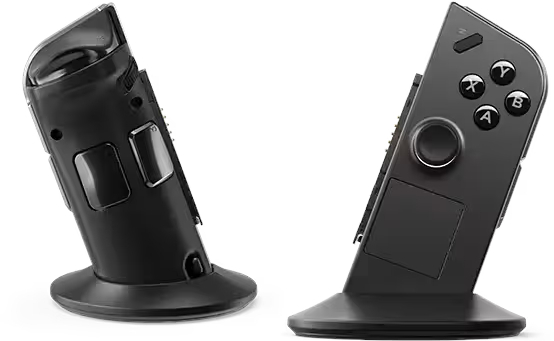
The device’s thickness and width, when compared to a 14-inch Razer Blade, raise questions about the space savings achieved by opting for the Legion Go. However, the built-in controllers and the reduced charger size contribute to its unique appeal. The device features an array of buttons, catering to controller gaming enthusiasts. While some users find the Legion Go’s edges sharp, Lenovo has acknowledged the weight concern and incorporated detachable controllers and a kickstand, enhancing flexibility in usage scenarios.

Innovative Hardware Additions:
Lenovo goes the extra mile by including a ballistic nylon zipper case, providing protection and portability. The detachable right controller, switchable to FPS mode, offers additional customization. A unique inclusion is a stand for the right controller, facilitating its use as a precision tool in first-person shooters or a mouse substitute. With a D-pad and a touchpad on the right-hand controller, the Legion Go caters predominantly to the right-handed majority.
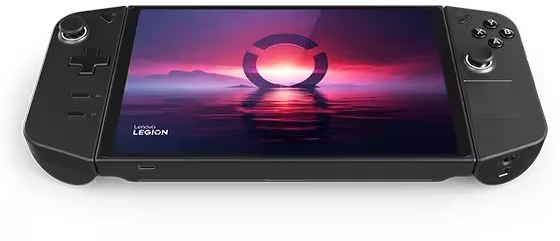
Aesthetics and Pricing:
Sporting a sleek black design, the Legion Go exudes a sense of quality. Lenovo’s decision to opt for black over white contributes to a more premium appearance. The device feels robust in hand, balancing its weighty feel. Priced between $700 and $750, depending on storage capacity (512GB or 1TB), the Legion Go offers a competitive deal. Powered by the AMD Z1 Extreme processor, akin to the higher-end ASUS ROG Ally devices, it promises heightened performance. The processor’s RDNA 3 Graphics iGPU delivers an Ultrabook-level performance, tailored for gaming on the go.
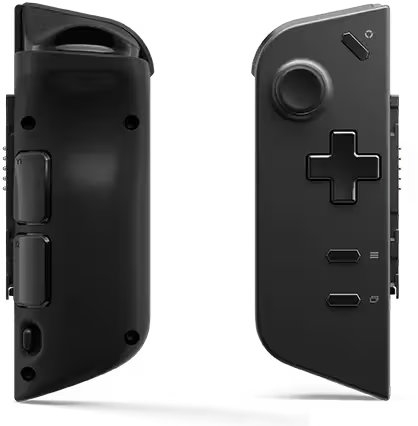
Gaming Performance and Display Quality:
The Legion Go relies on an iGPU for gaming, specifically the RDNA 3 Graphics iGPU. While conventional wisdom might deem this insufficient for gaming, the Legion Go leverages its smaller screen to enhance the gaming experience. AAA titles appear sharper and more visually appealing on the 8.8-inch display, thanks to the reduced resolution. The handheld device adapts to its smaller form factor, making it suitable for gaming despite its iGPU limitations.
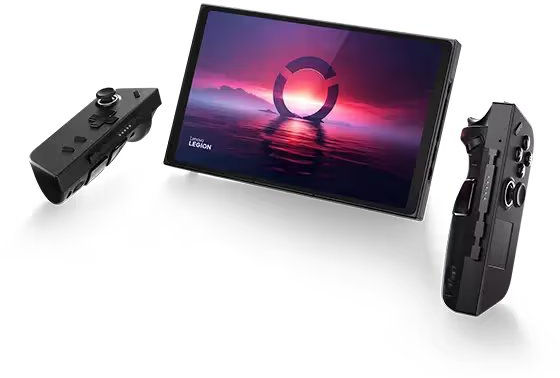
Windows Ecosystem:
It’s crucial to note that the Legion Go operates within the Windows ecosystem. Unlike more streamlined gaming devices, such as the Nintendo Switch, it demands a level of comfort with Windows intricacies. Users familiar with Windows PCs and gaming laptops will find it a suitable companion for on-the-go gaming. However, it lacks the TurnKey simplicity seen in devices like the Nintendo Switch or the streamlined experience of the Steam Deck.
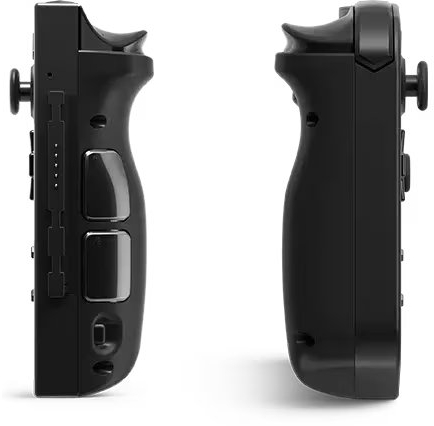
In Short:
The Lenovo Legion Go stands as an innovative entry into the realm of portable gaming devices. Its emphasis on a larger screen, innovative hardware additions, and competitive pricing contribute to its appeal. While the weight poses a challenge to portability, Lenovo’s thoughtful inclusion of detachable controllers and a kickstand addresses this concern. With a sleek design, powerful AMD processor, and a unique approach to gaming on the go, the Legion Go caters to a specific niche within the gaming community.

Delving into the intricacies of the Lenovo Legion Go, this portable Windows 11 Home Mini PC presents a myriad of features and considerations that cater to gaming enthusiasts. As we dissect its various aspects, it becomes evident that the Legion Go stands as a unique contender in the realm of handheld gaming devices.

Display Excellence:
One of the standout features of the Legion Go is its 8.8-inch IPS display, a size larger than other Windows-based and competing non-Windows handhelds. The 2560×600 resolution, combined with IPS technology, a 144Hz refresh rate, and Gorilla Glass 5, delivers a visually stunning and responsive touchscreen experience. Despite the seemingly high resolution for a handheld device, gaming at this display’s capacity is not only possible but surprisingly satisfactory.

Titles like Fallout New Vegas from 2010 perform admirably, demonstrating that the Legion Go excels in handling older games. The full P3 color gamut enhances the vibrancy of the display, even though the color tuning might be considered suboptimal by those with a keen eye for color accuracy. Claiming 500 nits of brightness, the Legion Go surpasses expectations with a measured 525 nits, ensuring a bright and vivid visual experience.
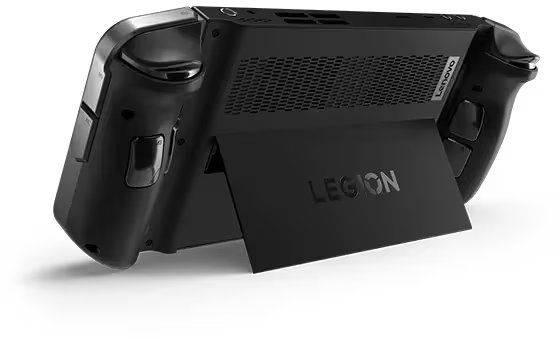
Hardware Connectivity and Ports:
Lenovo impresses with its hardware choices, equipping the Legion Go with two USB-C 40 Gbit per second ports. This outshines competitors like the ROG Ally, which features only one USB-C port. While one USB-C port is positioned at the bottom, potentially causing inconvenience, Lenovo compensates by providing a workaround using the top port. This allows users to connect the charger at the bottom and a hub with a keyboard and mouse on top, making usage more ergonomic.
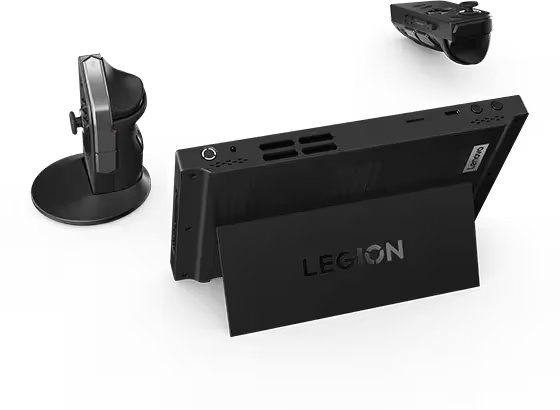
Notably, the Legion Go supports external GPU (eGPU) connections, providing an avenue for enhanced graphical performance. Supporting two DisplayPort outputs, the device can transform into a desktop substitute when connected to an external monitor for productivity or gaming purposes. The inclusion of a headphone jack and a micro SD card slot adds to the device’s versatility, catering to various user needs.
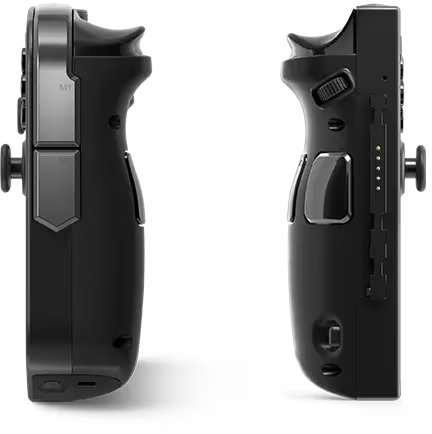
Performance and Upgradable Components:
Under the hood, the Legion Go boasts 16GB of low-power DDR5X RAM clocked at 7500 MHz, facilitating swift and efficient multitasking. The M.2 SSD, available in 512GB or 1TB options, offers ample storage for games and applications. The 2242 form factor allows users to upgrade the SSD if desired.
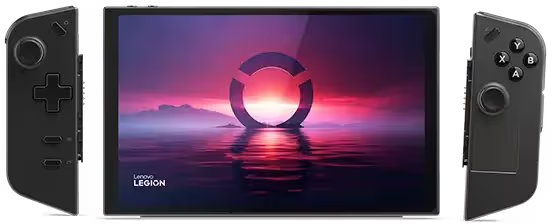
However, it’s worth noting that the stereo speakers on the Legion Go, while functional, might not meet the expectations set by competitors like the ROG Ally, which delivers superior audio quality with more pronounced bass. The fan noise during gaming sessions might prompt users to rely on the headphone jack for an immersive audio experience.
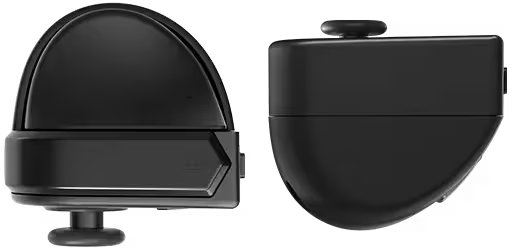
User Interface and Software:
The Legion Go operates on Windows 11 Home, offering users a familiar interface for gaming and productivity. The inclusion of AMD’s RDNA 3 Graphics iGPU ensures a satisfactory gaming experience, leveraging the device’s smaller screen size to compensate for the inherent limitations of integrated graphics.
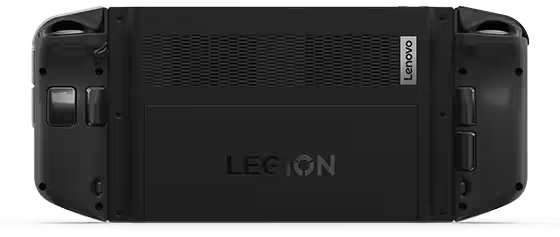
However, the device does not provide a TurnKey gaming experience akin to the Nintendo Switch or the more streamlined approach of the Steam Deck. Users need to navigate Windows intricacies, including updates, firmware tweaks, and display resolutions, making it a better fit for those comfortable with the Windows ecosystem.
Software Development and User Experience:
Lenovo’s Legion software is a work in progress, and the company has demonstrated a commitment to addressing early issues through updates. While the Legion Go shares similarities with the ROG Ally, it currently lacks some of the Ally’s advanced features, such as the performance overlay and quick performance switcher.
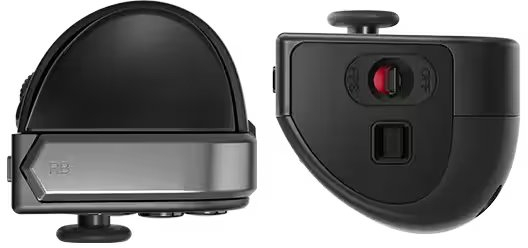
Lenovo’s software focuses primarily on game launching, with limited settings available. The Legion software’s simplicity may appeal to users seeking a straightforward gaming launcher, but enthusiasts might miss the robust features offered by competitors. Lenovo’s dedication to improvement is evident, and future updates may introduce additional functionalities.
Pure Gaming Console:
The Lenovo Legion Go emerges as a compelling addition to the handheld gaming device landscape, offering a distinctive blend of features and capabilities. Its impressive display, robust hardware choices, and Windows 11 integration cater to a niche audience of gaming enthusiasts.
While certain aspects like speaker quality and fan noise during gaming may raise considerations, the Legion Go’s innovative design, competitive pricing, and upgradable components contribute to its appeal. As Lenovo continues refining its software and addressing user feedback, the Legion Go stands poised to establish itself as a noteworthy contender in the evolving realm of portable gaming devices.
Venturing further into the realm of gaming on the Lenovo Legion Go, there are some nuanced considerations, primarily centered around game compatibility and the unique display orientation of this handheld device. While the majority of tested games run seamlessly, the native portrait mode of the display introduces occasional challenges, particularly with older games that might not adapt seamlessly to this unconventional configuration.
Despite Windows handling the display rotation seamlessly, some games, including Red Dead Redemption 2, struggle with aspect ratios and display resolutions. To overcome these issues, users might need to resort to running games in windowed mode, foregoing the immersive experience of fullscreen gaming. Additionally, the absence of integer scaling poses a limitation, requiring users to perform registry edits for resolution adjustments. While this workaround can maintain clarity, the need for such manual interventions raises questions about the device’s user-friendliness.
As for performance specifics, the Legion Go houses a 49Wh battery accompanied by a compact 65W charger. The battery capacity is on par with that of a 13-inch Ultrabook, emphasizing that, despite the handheld nature of the device, gaming on battery power has its constraints. Comparable to gaming laptops, the Legion Go’s battery life diminishes significantly during resource-intensive gaming sessions, offering around 2 hours at best for AAA titles.
In less demanding scenarios, such as productivity work, the device might stretch to approximately 4.5 hours. This underscores a potential limitation for users hoping to extensively use the Legion Go as a portable gaming device without a constant power source. The desire for prolonged unplugged gaming sessions clashes with the device’s inherent performance demands, and while the Legion Go maintains commendable performance levels, the trade-off is a relatively shorter battery life.
Addressing the prospect of using the Legion Go as a tablet, questions arise regarding its practicality and user experience. While there’s an inherent appeal to having a Windows-based tablet for gaming and productivity, the challenges associated with the touchscreen interface become apparent.
Using the device solely as a tablet without peripherals like a keyboard and mouse may prove cumbersome, as the Windows touchscreen experience has not gained widespread acclaim. Suggestions to opt for alternatives like the Surface Pro or other 8-9 inch Windows tablets with more refined touch interfaces are presented, emphasizing that the Legion Go’s forte lies in its versatility as a desktop substitute or gaming-on-the-go device rather than a standalone tablet.
Summarizing the Lenovo Legion Go’s unique position in the market, it stands out as a novel entry in the handheld gaming landscape, offering a distinctive blend of features. The absence of direct competitors in this niche further amplifies its significance, positioning it as an exciting exploration into uncharted territory.
The device’s ability to bring Windows gaming anywhere holds appeal, especially for users seeking a more versatile option compared to dedicated gaming platforms like the Steam Deck. The inherent flexibility of running various applications, including emulators and storefronts beyond Steam, adds to the device’s allure.
However, the idiosyncrasies related to display orientation, battery life, and touchscreen limitations underscore the need for potential users to carefully evaluate their specific requirements and preferences. Despite its quirks, the Legion Go presents a well-executed hardware design, making it an intriguing prospect for those drawn to the concept of a larger handheld device with detachable joysticks.
Lenovo Legion Go: In-Depth Pros and Cons Analysis
Pros:
- Unique Form Factor: The Lenovo Legion Go introduces a distinctive handheld form factor to the gaming landscape, offering a larger 8.8-inch display compared to its competitors. This provides a more immersive gaming experience and caters to users who find smaller handhelds limiting.
- High-Resolution Display: The 2560×600 IPS display with a 144Hz refresh rate delivers crisp visuals and smooth gameplay. The touchscreen functionality and Gorilla Glass 5 protection add to the display’s versatility.
- Versatility with Detachable Joysticks: The inclusion of detachable joysticks enhances the device’s versatility. Users can seamlessly transition from handheld gaming to using the device as a desktop substitute, offering flexibility for different gaming scenarios.
- Impressive Hardware: The AMD Z1 Extreme processor, combined with 16GB of low-power DDR5X RAM and an M.2 SSD (with options for 512GB or 1TB), ensures commendable performance. The fast RAM contributes to smooth gaming experiences and overall system responsiveness.
- Innovative Control Options: The device incorporates thoughtful control features, including rear buttons and backlit LEDs around the joysticks. The ability to customize the LED lighting adds a touch of personalization for gaming enthusiasts.
- Multiple USB-C Ports: Featuring two USB-C ports, with one supporting 40 Gbit per second, provides users with enhanced connectivity options. This is an improvement over some competitors, offering more flexibility for peripherals and accessories.
- Competitive Pricing: With a price range of $700 to $750, the Legion Go offers competitive pricing, especially considering its unique design and feature set. The affordability enhances its appeal for gamers looking for a novel gaming experience without breaking the bank.
- Accessories Included: The inclusion of a ballistic nylon zipper case, detachable right controller, and a stand in the box adds value to the purchase. Lenovo’s attention to providing these accessories contributes to a more comprehensive user experience.
- Transparent Software Improvements: Lenovo has shown a commitment to addressing software issues and improving user experience through blog updates. This transparency instills confidence in the brand’s dedication to refining the device post-launch.
- Windows Compatibility: Unlike some dedicated gaming platforms, the Legion Go’s Windows compatibility allows users to run various applications, including emulators and storefronts beyond Steam. This broadens the device’s utility and appeals to users with diverse gaming preferences.
Cons:
- Weight and Portability: Weighing almost 2 pounds, the Legion Go is relatively heavy for a handheld device. While this may enhance durability, it can be a drawback for users seeking a more lightweight and portable gaming solution.
- Challenges with Display Orientation: The native portrait mode of the display can pose compatibility challenges, especially with older games that may not seamlessly adapt. This requires users to make manual adjustments, impacting the out-of-the-box gaming experience.
- Touchscreen Limitations: The touchscreen interface, while a valuable addition, might not provide the most intuitive or user-friendly experience. Users might find it challenging to navigate Windows without additional peripherals like a keyboard and mouse.
- Battery Life: The 49Wh battery, while comparable to a 13-inch Ultrabook, poses limitations for prolonged gaming sessions on battery power. The trade-off between performance and battery life may be a concern for users looking for extended unplugged gaming.
- Software Maturity: The Legion Go’s software, at the time of release, exhibited some instability issues that Lenovo has been actively addressing. While ongoing improvements are expected, early adopters might encounter occasional glitches.
- Game Compatibility Challenges: Certain games, including Red Dead Redemption 2, face difficulties in adapting to the Legion Go’s display configuration. This requires users to run games in specific modes, potentially affecting the immersive gaming experience.
- Flaky USB-C Ports: Some users have reported occasional USB-C port issues, especially with the bottom port. Connectivity problems, particularly during data transfers, might hinder the user experience.
- Limited Features in Legion Software: The Legion software, while functional, lacks some of the advanced features found in competitors like the ROG Ally. Users may miss features like a comprehensive performance overlay and quick performance switcher.
- Complex Control Attachment: Attaching and detaching the joysticks can be challenging, with a release button that feels stiff. The process may not be as seamless or user-friendly as seen in competing handheld devices.
- Limited Tablet Use: The Legion Go’s viability as a standalone tablet might be limited due to the challenges associated with Windows’ touchscreen interface. Users seeking a dedicated tablet experience may find more suitable alternatives.
In conclusion, the Lenovo Legion Go presents a unique proposition in the handheld gaming market with its innovative design, detachable joysticks, and Windows compatibility. While it brings exciting possibilities, users should carefully weigh the advantages and disadvantages based on their preferences, gaming needs,
and tolerance for early software adjustments. As Lenovo continues to refine the device through updates, the Legion Go stands as a testament to the evolving landscape of portable gaming solutions.
Lenovo Legion Go
-
Performance - 96%96%
-
Price - 97%97%
-
Value - 97%97%

